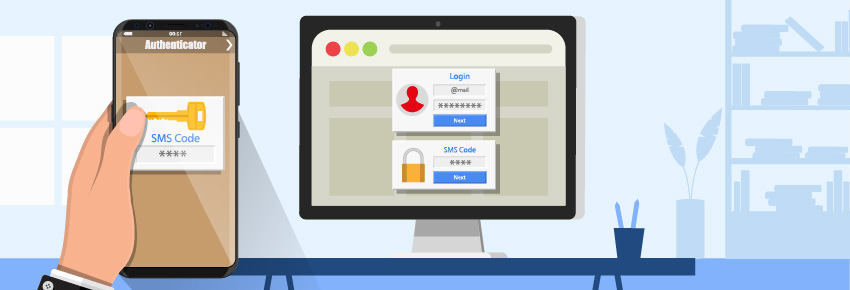Why You Must Enable Two-Factor Authentication in MDM
Jan 29, 2021 | 42Gears Team

What is Two-Factor Authentication?
If you’re among those whose entire business operates through Gmail or other online services, these accounts are your most prized possessions. That means securing them just by using a username and password is not enough; passwords are really easy to crack and log-in details can be compromised in minutes. For this reason, it’s imperative that admins employ two-factor authentication in MDM software. This shouldn’t be a surprise; if you have ever completed an online transaction or used a service like Gmail, chances are you were required to use two-factor authentication.
Two-factor authentication is the de-facto way to secure online accounts and apps. It adds another layer of security to the login process through authentication. Basically, it’s a crucial endpoint security measure that adds an extra step when signing into high-value services.
How Does Two-Factor Authentication Work?
When verifying the identity of a person online, modern authenticators use three separate factors- knowledge, possession and inherence categories. Simply put, three factors are used at the time of authentication to confirm the identity of a person logging into an account- something they know, something they have, and something they are. For example, “something they know” can be passwords, “something they have” can be cards or keys, and “something they are” can be biometrics (for example, a fingerprint). Two-step authentication uses any two of these factors, instead of just one, which makes it more secure than password-based authentication.
How Can Organizations Benefit from Two-Factor Authentication?
Most organizations now use mobile device management (MDM) software, which allows IT admins to remotely manage, control, and secure the entire device fleet. But what about the security of the MDM? It is important to secure MDM console login to prevent any breach. That’s why SureMDM has integrated two-factor authentication to protect against data breaches. In this case, endpoint security and manageability imparted by two-factor authentication start right at the console level. As such, SureMDM offers multi-user profiles or sub-users for IT admins at the console level.
Enabling two-factor authentication in SureMDM is easy and we recommend doing so if you haven’t already. By adding this extra layer of security, SureMDM ensures that admin accounts remain protected from password theft. Admins can enable two-factor authentication for owner and co-account owners through Google Authenticator, email, and/or phone number. When signing into SureMDM on any device, IT admins have to provide an additional form of identity proof, such as a time-sensitive OTP (one-time-password).
How to Turn Off Two-Factor Authentication in MDM?
Sub-users or co-owner accounts of SureMDM should not have the permissions needed to disable two-factor authentication settings. High-level admins can still disable the authentication in a few simple steps when “Require Two-Factor Authentication” settings under Account Management are disabled.
If you’re interested in learning more about security related to MDM, you can read more here.
Try how two-factor authentication can
be enabled on the console
Subscribe for our free newsletter
